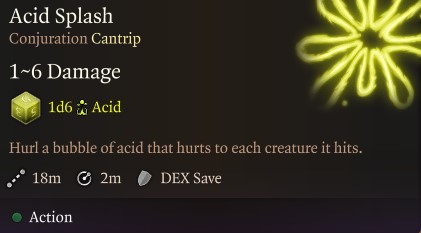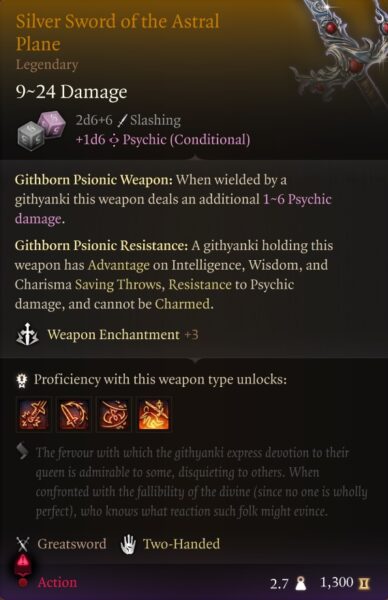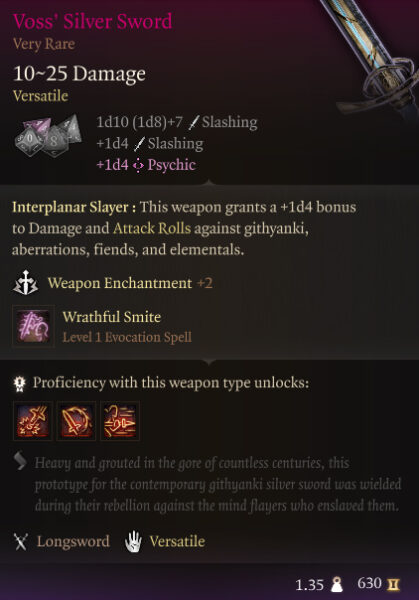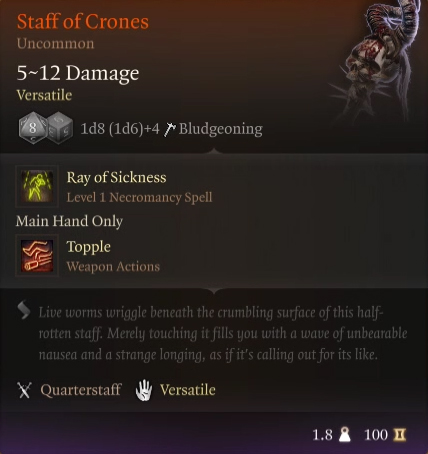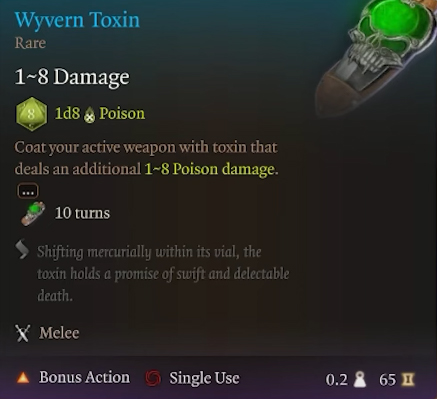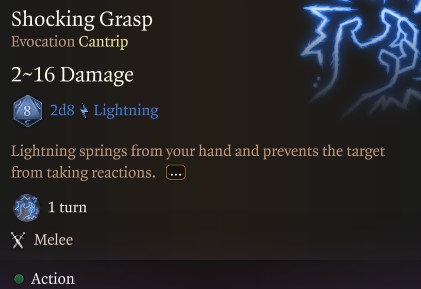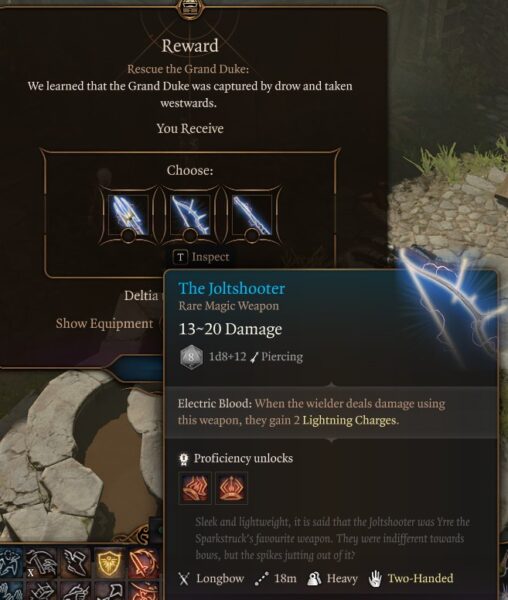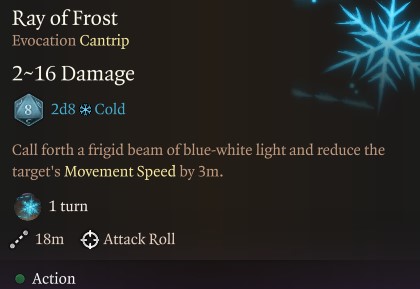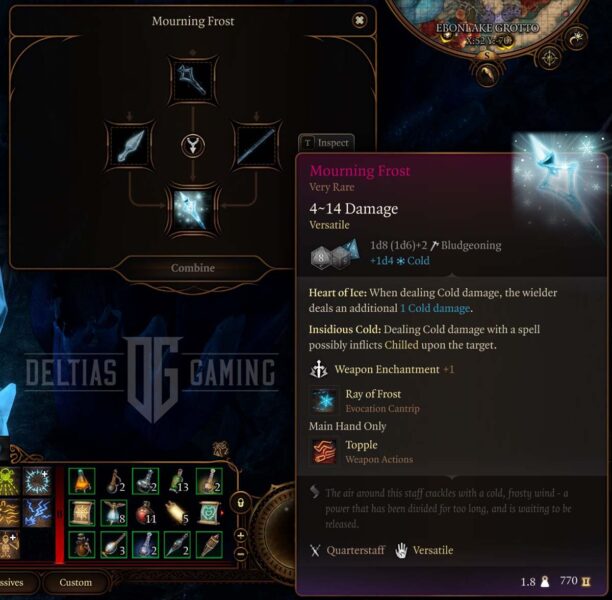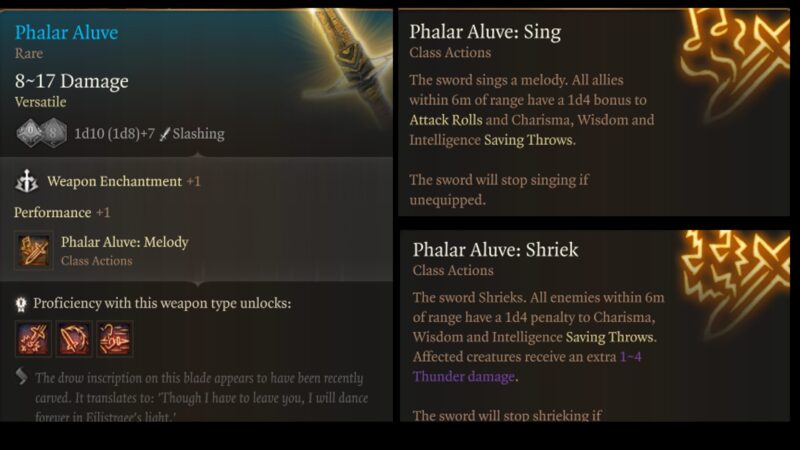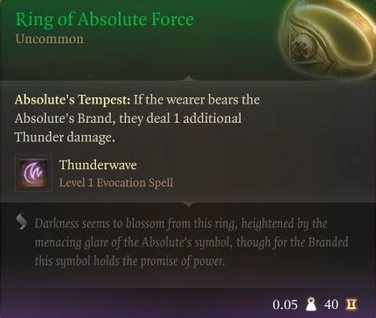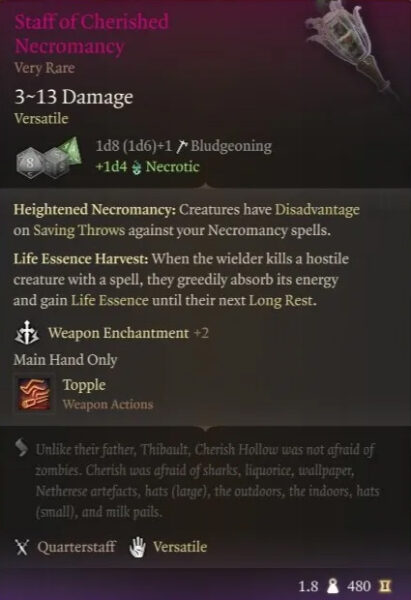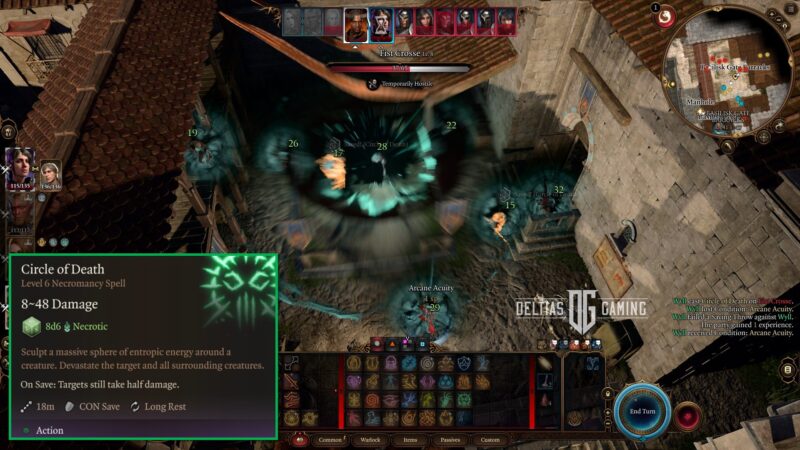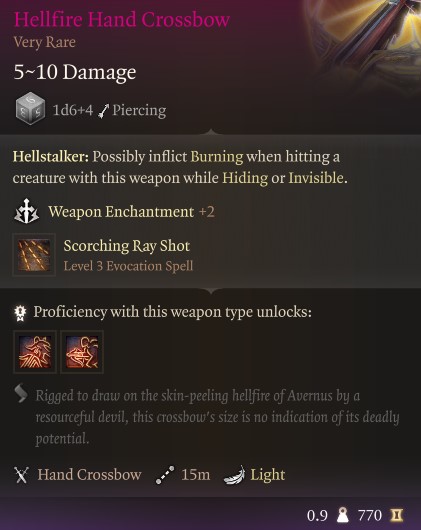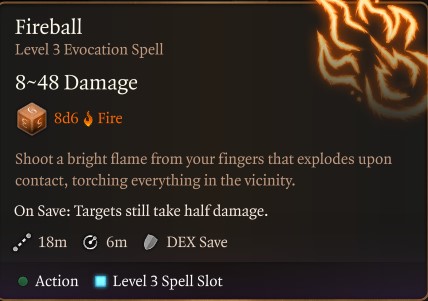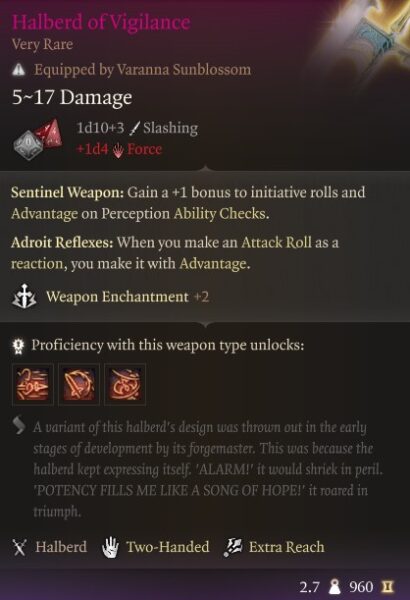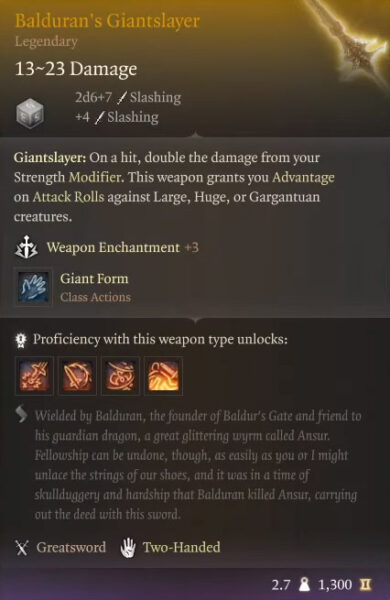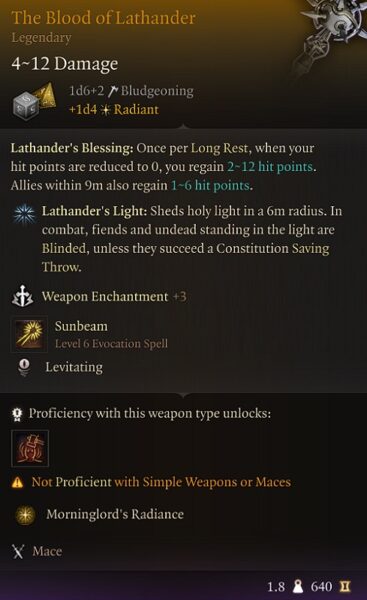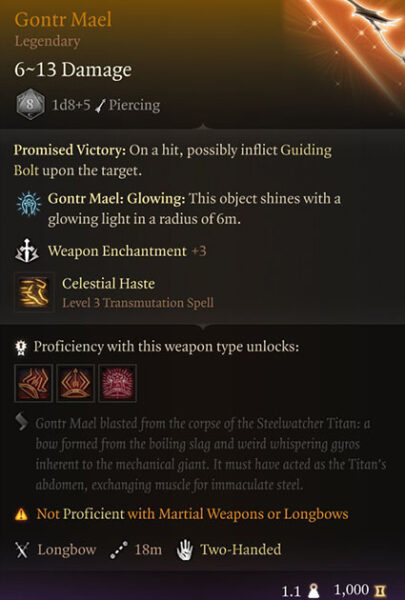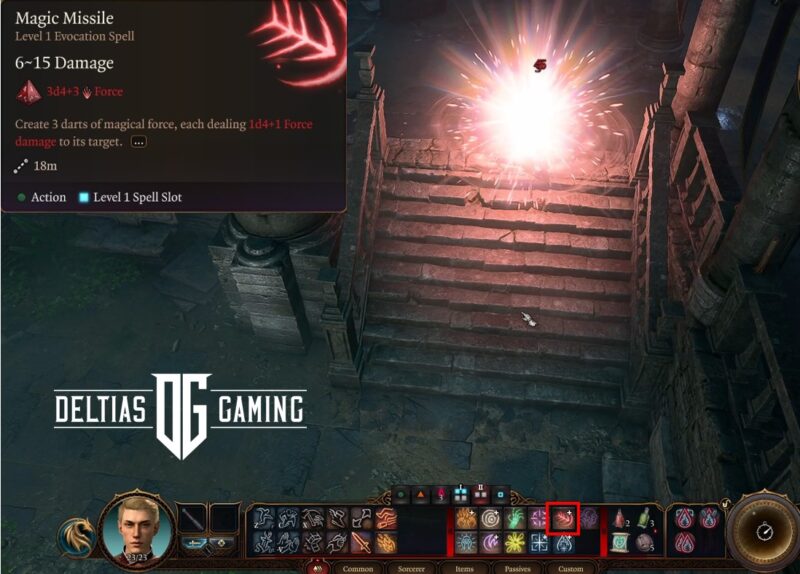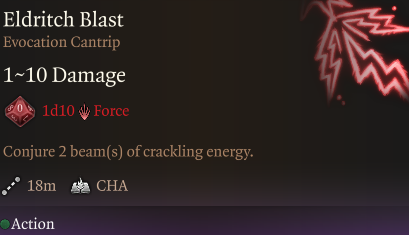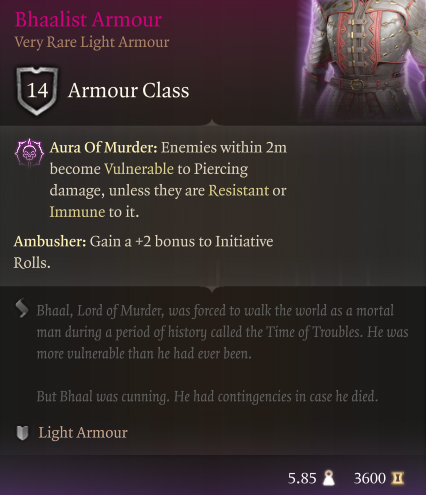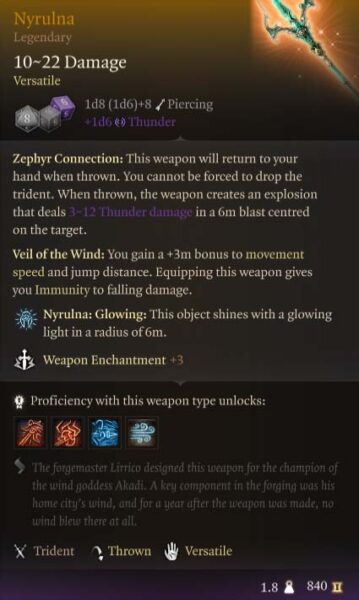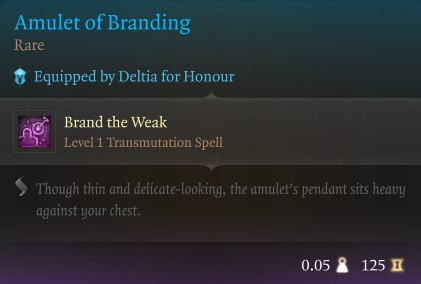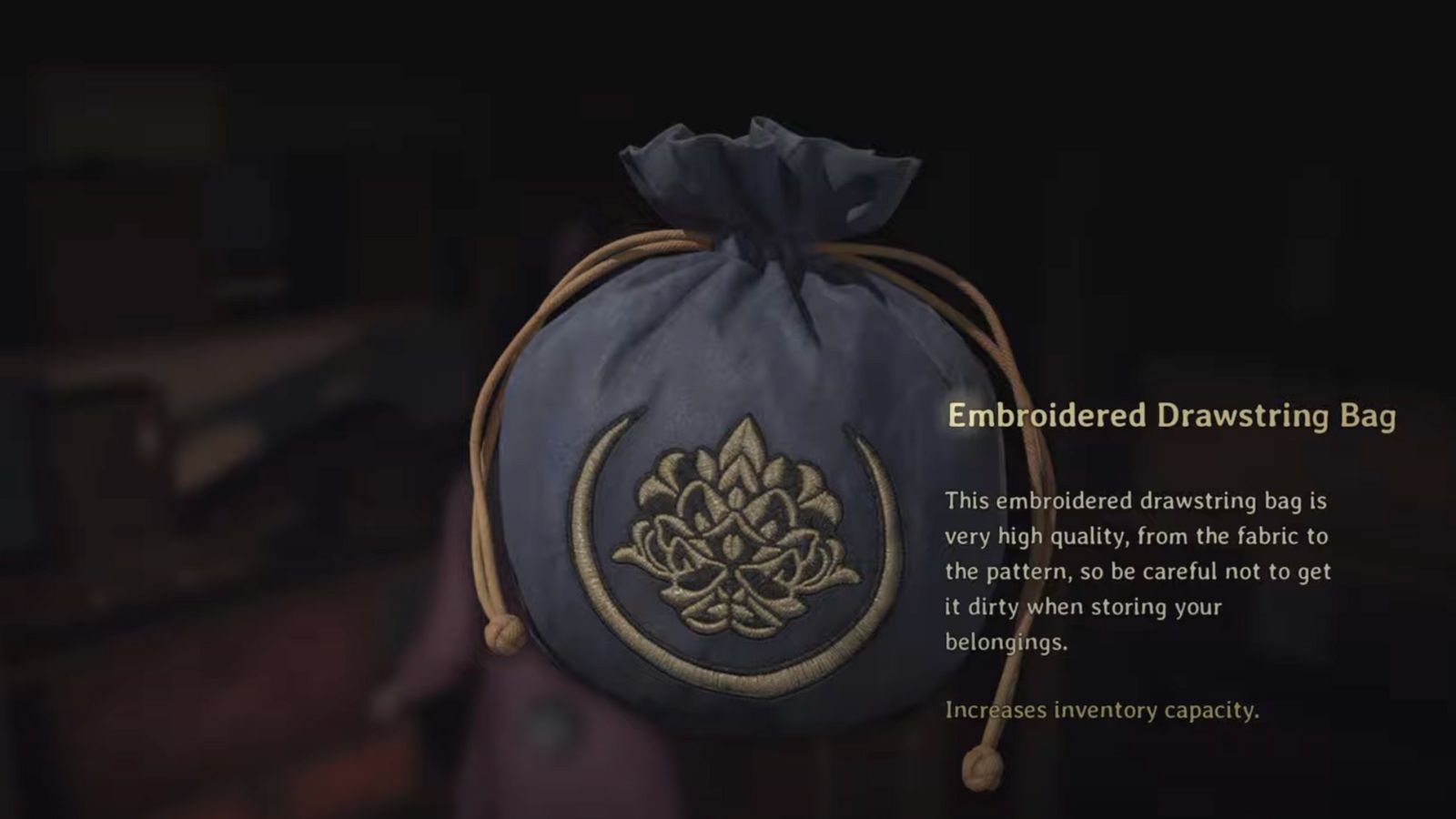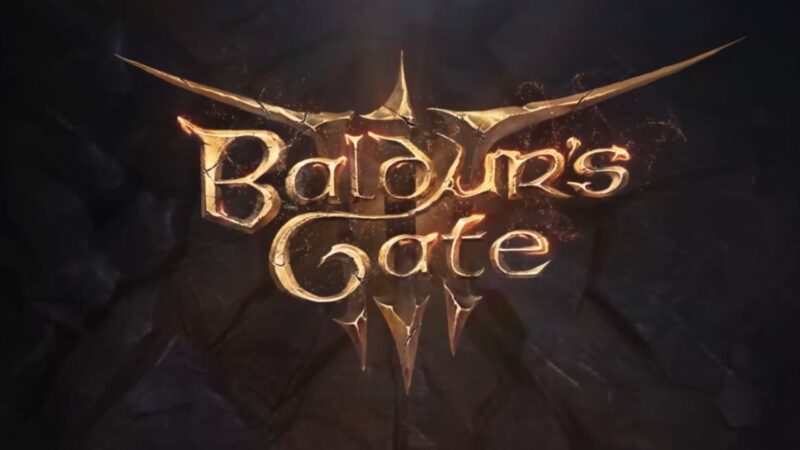Discover the different types of damage you can deal in Baldur’s Gate 3, our tier list for the most powerful, and how you can wield them.
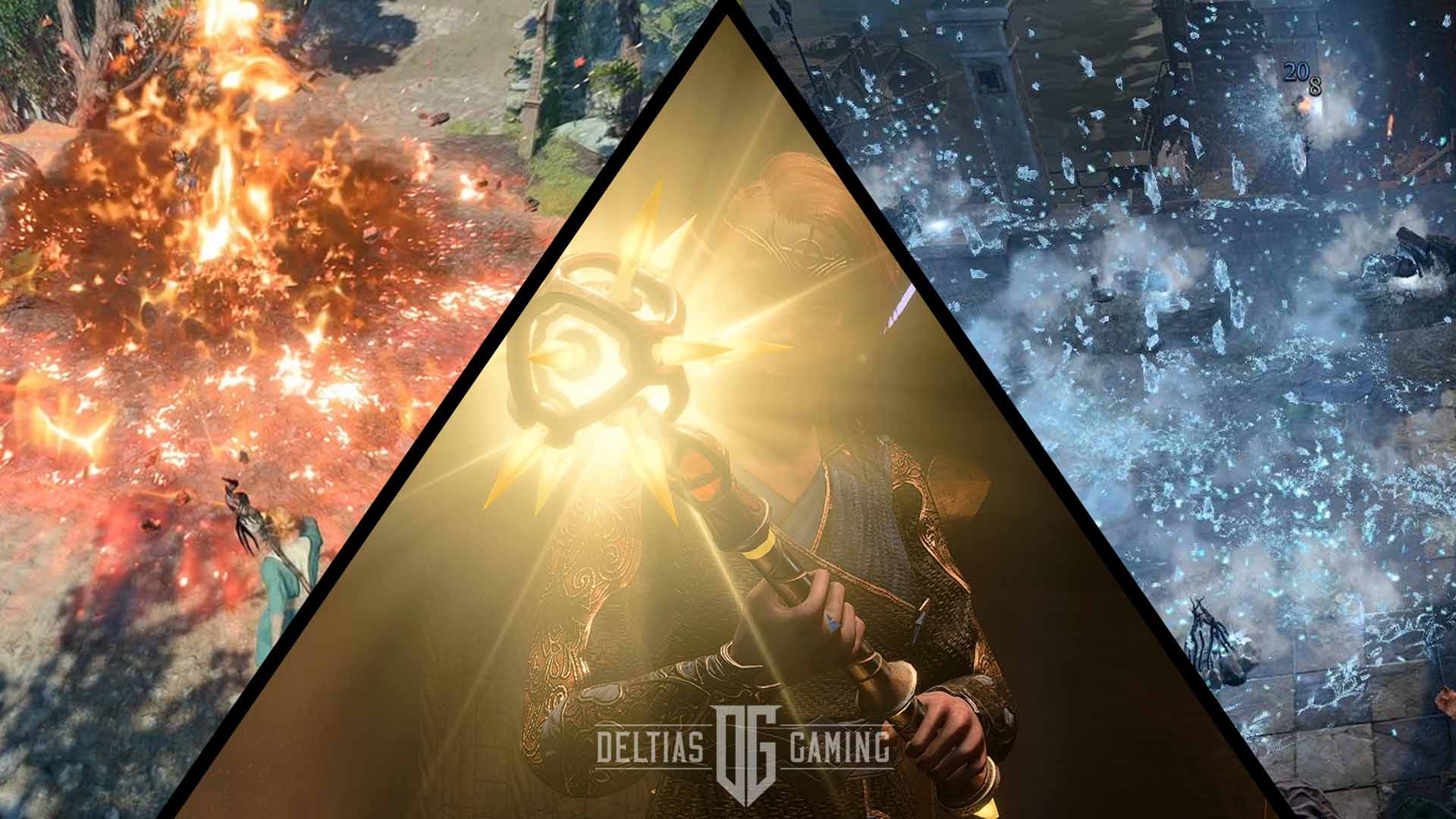
There is a lot to understand and coordinate when you’re preparing for combat in Baldur’s Gate 3, from classes, weapons, armour, spells, and more. One of the seemingly minor, but very crucial, components of combat is knowing the primary damage type you should be dealing. Damage types can range from basic Physical damage to various elemental types, or environmental. Furthermore, most enemies in the game will have innate Resistances to certain damage types. And many will have Vulnerabilities to other types. Enemies with Vulnerabilities will take double the damage if you use those types against them.
Consequently, choosing the right damage type for the right enemy is vital, especially in higher difficulty levels. And it has the potential to make your play-through smoother. In this guide, we’ll be covering all of the different types of damage in Baldur’s Gate 3 and rank their overall strength in a tier list so you know what to prioritize.
Damage Types Tier List for Baldur’s Gate 3
The best damage types in Baldur’s Gate 3 are Piercing, Force, and Radiant. Piercing is a strong Physical damage type that can easily be found on a wide range of weapons, including both melee and ranged. Force type not only deals direct damage but can often be used to push enemies off of ledges for additional fall damage or instant kills. Finally, Radiant is our last S Tier damage type because it is incredibly effective against multiple types of enemies you will encounter in Acts 2 and 3 of the game.
The tier list for the best Damage Types in Baldur’s Gate 3 (BG3) is:
- S Tier: Piercing, Force, Radiant
- A Tier: Slashing, Fire, Necrotic
- B Tier: Thunder, Cold, Lightning
- C Tier: Poison, Psychic, Bludgeoning
- D Tier: Acid
Acid (D Tier)
Acid damage ranks last on our Baldur’s Gate 3 damage types tier list because it is extremely weak. The primary sources of Acid damage are the Acid Splash cantrip and the Melf’s Acid Arrow spell. You can acquire the cantrip with a spellcaster at Level 1, and Melf’s Acid Arrow by equipping Melf’s First Staff. The only real benefit to Acid damage is that creatures affected by the Acid condition will have their Armour Class reduced by 2. However, that only lasts as long as they remain standing on an acid-covered surface.
Furthermore, on top of having a weak damage effect in general, very few creatures in Baldur’s Gate 3 have a vulnerability to Acid. Moreover, many have either an immunity or resistance to Acid. Therefore, you’ll often be doing even less damage with Acid than its baseline.
If Acid damage is an additional damage type (such as on the Hunger of Hadar spell) then it’s not bad to have. However, by itself, it is incredibly weak and not worth prioritizing.
Bludgeoning (C Tier)

Bludgeoning is the first type of Physical damage on our tier list and it is ranked the lowest because it is not as strong as the other two. Unless a melee weapon has some other damage type or power to boost its strength (such as The Blood of Lathander), then there are usually better options. Weapon types that typically deal Bludgeoning damage include clubs, hammers, maces, gloves for unarmed combat, and even torches. Furthermore, staves will also cause Bludgeoning damage when used for physical attack, though your spellcasters will never use their staff that way unless desperate.
However, there are some notable exceptions where you will want to use Bludgeoning against foes that are vulnerable to it. The mechanical monster Grym is an excellent example of this because he becomes vulnerable to bludgeoning in his Superheated form. If you want to simplify that fight without using the forge hammer, then have a Berserker Barbarian throw torches at him from the stairs high above.
Additionally, Bludgeoning can come in handy while exploring. If there is a pile of rocks or stone wall you need to break down, a bludgeoning hammer will be much more effective in clearing your path than sword blades or arrows.
Psychic (C Tier)
Psychic is ranked as a C Tier in our rankings of damage types for Baldur’s Gate 3 because it’s only worth prioritizing if you are playing a character of the Githyanki race. Furthermore, there are several enemies in the game that are either resistant to Psychic damage or just straight-up immune to it. Moreover, there are very few creatures who are vulnerable to Psychic.
However, Psychic damage can be a decent source of additional damage for a Githyanki-origin character or Lae’zel. There are several sources of Psychic damage in the game, including weapons, a few gear pieces, spells, and also Illithid powers. We highly recommend acquiring the Silver Sword of the Astral Plane. You can get this powerful sword during your first encounter with Kith’rak Voss near the Mountain Pass. It does additional Psychic damage, and Githyankis also gains an Advantage on Intelligence, Wisdom, and Charisma Saving throws. Furthermore, it grants Resistance to Psychic damage, and you cannot be Charmed.
Poison (C Tier)
Poison is similar to Acid in that it’s fairly weak, but Poison earns a higher spot on our tier list because it’s easy to apply. Moreover, if you use toxins then it doesn’t use up an Action during combat. You can use any Toxin consumable this way by throwing the bottle on the ground. Then, use the Dip action with all of your companions so that they coat their weapons in the substance. Afterward, all weapon attacks will deal additional Poison damage, and the coating will last for 10 turns.
Furthermore, you can also cause Poison damage with certain types of spells, such as Ray of Sickness. This is a Nercromany spell any Wizard or Sorcerer can learn at Level 1, or any character can acquire using the Staff of Crones. A successful hit has a chance of causing the Posoned condition. Consequently, your enemy will suffer Disadvantage on all attack rolls and Ability Checks.
Lightning (B Tier)
Lightning ranks in the middle of the pack in our damage type tier list because there are several enemy types it is useful against, including constructs and Steel Watchers. Moreover, you can easily boost its effectiveness by casting Lightning onto water surfaces. While this may seem complicated to produce, it’s quite simple to achieve. There are lots of bottles of water you can find throughout the world. All you have to do is throw one at the feet of your enemies to create a Lightning area-of-effect.
Additionally, the Storm Sorcerer subclass specializes in Lightning damage and the burst damage they can achieve is impressive. However, you’ll want to be careful because some creatures are immune to Lightning, including Grym and Ansur. Therefore, make sure your Storm Sorcerer has a few other tricks up their sleeve for certain fights.
Finally, there is some gear you can find in Act 1 that has perks based on building Lightning Charges. Originally these weren’t very desirable pieces. However, they were reworked and now add damage on your next attack after you’ve built up 5 charges. If you can obtain at least a few of these pieces such as The Joltshooter, The Speedy Lightfeet, and The Sparkle Hands, then you can both gain and use these Lightning Charges.
Cold (B Tier)
Although there are not many creatures vulnerable to cold, this damage type makes it to the middle of our tier list because it is a great crowd-control element you can use throughout the game. Level 1 Sorcerers and Wizards can choose the Ray of Frost cantrip early on and doesn’t use a spell slot. Consequently, this bolt of ice not only does Cold damage but also slows the target’s movement speed.
Additionally, you can get the Mourning Frost quarterstaff in Act 1. This quarterstaff has perks that not only boost Cold damage but can inflict Chilled. Chilled creatures become vulnerable to Cold damage, which means you can double the damage done against them by casting another Ray of Frost.
Furthermore, spellcasters get a phenomenal Cold spell at Level 7, when you can add Ice Storm to your arsenal. This spell has a huge area-of-effect radius so it’s best to cast it before the field becomes crowded with your allies. The spell not only damages but also creates an Iced surface. Movement speed for anyone standing on it is halved. Moreover, creatures can also fall and become Prone.
Thunder (B Tier)
Overall, Thunder is more of a niche type of damage that you can build into using the Tempest Cleric subclass. However, what pushes it up our Baldur’s Gate 3 damage type tier list is the usefulness of the best spell in the early game: Thunderwave. This spell not only causes a blast of Thunder damage, but it also has the potential to push your enemy back. Consequently, this spell can be used to control the crowd and protect your spell casters. Furthermore, with the right positioning, you can attempt to use it to push your enemy off of a ledge.
Additionally, there is also a Longsword found in the Underdark called Phalar Aluve. Using the unique class action Phalar Aluve: Shriek will debuff enemies in a radius around you. Additionally, any affected creatures will take an additional 1-4 points of Thunder damage each time they are attacked. This counts for ranged companions attacking from outside the radius.
Later on in the game Thunder damage will become much less relevant. However, its much-appreciated strength in the early game earns it a B ranking in our Baldur’s Gate 3 damage type tier list.
Necrotic (A Tier)
Necrotic damage is the first of our A tier damage types due to its strength against living creatures and its availability via weapons and spells. A Necromancy Wizard wielding the Staff of Cherished Necromancy while casting the Circle of Death spell is one of the best spellcasters in Baldur’s Gate 3. Additionally, a Circle of Spores Druid wearing the Armour of the Sporekeeper and using the same staff can also be a powerful dealer of Necrotic damage.
However, what holds Necrotic damage back is that so many enemies are immune or resistant to it. Undead enemies of all types, many of which are in the game, are particularly immune to Necrotic. You’ll have to make sure that your Necromancer Wizard has access to other types of damage spells for these combat situations.
Fire (A Tier)
Fire is an amazing damage type that you can find on a variety of armor and weapons. Moreover, it is also the element that is part of one of the best area-of-effect spells in the game, Fireball. However, Fireball won’t be available for your Wizard or Sorcerer until Level 5, or until you get the Incandescent Staff in Act 2. However, you can create the same effect by throwing bottles of grease on the ground and shooting a Fire Arrow or casting Fire Bolt. Moreover, you can use the same attacks on barrels of smoke powder or casks of oil for a similar explosion.
Furthermore, Scorching Ray is another great Fire-based spell that Sorcerers and Wizards can learn earlier at Level 3. Additionally, you can find it on some gear pieces such as the Hellfire Hand Crossbow, Circlet of Blasting, and Gloves of Cinder and Sizzle. Equipping these items will allow your melee characters a chance to cause the same kind of AoE devastation.
Slashing (A Tier)
Melee in Baldur’s Gate 3 heavily favors two-handed Greatsword, primary ability Strength builds that use Slashing. Consequently, you’ll find a lot of weapons all throughout the game that will serve your Fighters, Barbarians, Paladins, and Clerics well. The Everburn Blade is a fantastic sword you can collect in the prologue and will remain relevant throughout all of Act 1. Moreover, this sword also does additional Fire damage and can even serve as a light in dark places.
Act 2 is a little light on great Slashing weapons. However, you can purchase the Halbred of Vigilance which gives you a bonus to Initiative and also does Force damage. Furthermore, you can loot Cruel Sting from Kar’niss if you join the convoy to Moonrise Towers. It will do extra Poison damage if you equip it to a Drow like Minthara and use Ensnaring Strands to restrain targets.
Finally, Act 3 is a wealth of great slashing weapons, from the Sword of the Emperor in the Knights of the Shield Hideout to the Sword of Chaos at the Murder Tribunal. It culminates in one of the best weapons in the game, Balduran’s Giantslayer. This is a must-have weapon for any end-game melee build. Very few enemies are immune or resistant to Slashing damage. Therefore, it will always be a top-tier damage type for melee fighters.
Radiant (S Tier)
Radiant damage takes the number 3 spot on our Baldur’s Gate 3 top damage types list because of the spell power availability, especially when combined with a Paladin’s Divine Smite. Moreover, Guiding Bolt is an early-level Cleric spell that can be used as a single target killer throughout the entire game. Moonbeam is another Radiant-based spell that Druids can pick up at Level 3. Or you can get a free cast by equipping Selûne’s Spear of Night.
The Spirit Guardians spell has a Radiant variant that Clerics unlock at Level 5, and it deals some of the best area-of-effect damage in the game. It is a Concentration-based spell, but it will last for as long as your character can hold it. Moreover, it moves with your character, so you have the potential to run that Radiant devastation all across the battlefield.
Powerful Radiant weapons include the Blood of Lathander mace, which is one of the first legendary weapons you can find in the game. By equipping it you unlock a freecast of the Sunbeam spell which can deal a powerful amount of Radiant damage and potentially Blind your enemies. Otherwise, you have to wait until Level 11 for a Druid, Sorcerer, or Wizard to unlock this spell. Finally, there is the legendary longbow Gontr Mael, which has a chance to inflict Guiding Bolt upon any target you hit.
Force (S Tier)
Force damage earns the number two spot on our best damage type tier list for Baldur’s Gate 3 because it is readily available in the early game, and remains viable through Level 12. The best sources of Force damage are spells. Magic Missile is an early-game spell for Sorcerers and Wizards that cannot miss. The damage is low to balance this 100% hit chance, but it’s a great way to finish off low-health enemies. Additionally, it remains useful even in the end game, particularly against Orin when you’re blasting away her layers of Unstoppable.
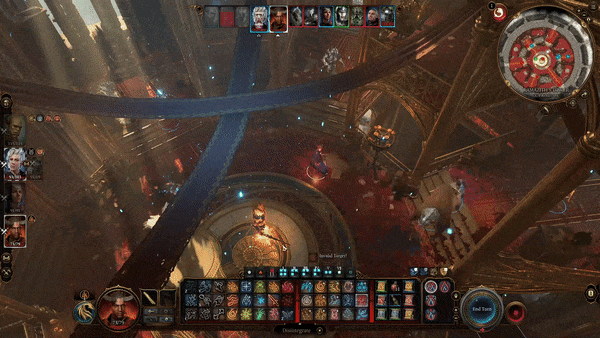
Moreover, Disintegrate is a game changer at the end of the game, as a powerful blasting spell Wizards and Sorcerers can unlock at Level 11. It is a Level 6 spell, so you won’t be able to cast it very often. However, it can potentially deal 50-100 points of Force damage in a single hit. Furthermore, you can use the Markoheshkir staff to unlock a second cast of any Level 6 spell for another free cast of Disintegrate once per Long Rest.
Finally, for non-magical-based classes, there are other ways to deal Force damage. Smokepowder Arrows will deal a combination of Fire and Force damage. The hand crossbow Ne’er Misser not only deals Force damage but will also grant the user access to the Magic Missile spell. Tanky Paladins can use Viconia’s Walking Fortress to deal Force damage as a Reaction shield bash.
Piercing (S Tier)
Piercing is the number one damage type in Baldur’s Gate 3 because this damage source is used in multiple legendary weapons, which gives it the most versatility and end-game power. Moreover, you can pick up an early game accessory called the Amulet of Branding in Act 1. This necklace lets you cast Brand the Weak, which imposes vulnerability on an enemy to Bludgeoning, Slashing, or Piercing damage. This by itself is a huge boost to all types of Physical damage, so that this ‘little’ spell can have a powerful impact on end-game boss fights.
Furthermore, in Act 3 you can combine the Bhaalist Armor with the legendary trident Nyrulna. The armour will cause all enemies within 2 meters to become Vulnerable to Piercing damage, so long as they are not already Resistant or Immune to it. Combine this with Nyrulna’s piercing damage, and your melee character can cut through mobs of enemies.
Finally, most daggers and arrows/bows deal Piercing damage, giving Rogues and Rangers a lot of burst potential. For example, you can cast Brand the Weak to mark Piercing Vulnerability on a strong target. Then, using a Gloom Stalker Ranger you can fire off a ranged attack and deal 70 to 100 damage in one arrow. Another option would be a Rogue Assassin attacking from Invisibility while dual-wielding Bloodthirst and Rhapsody.
Looking For More About Baldur’s Gate 3?
Thank you for reading Baldur’s Gate 3: Damage Types Tier List guide. We also provide the latest news and create guides for Baldur’s Gate 3. Additionally, watch me play games on Twitch or visit my YouTube channel!
 Reddit
Reddit
 Email
Email
